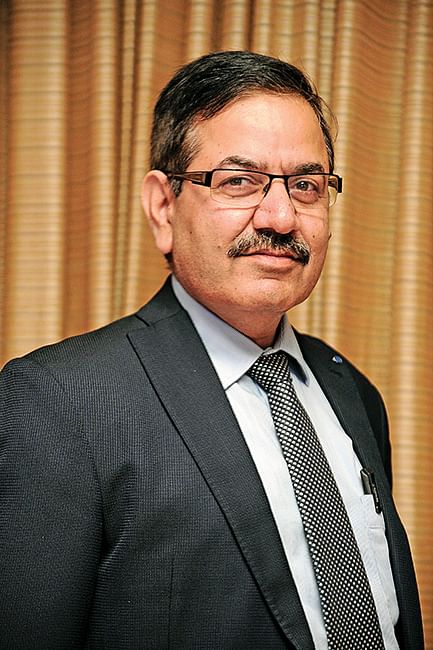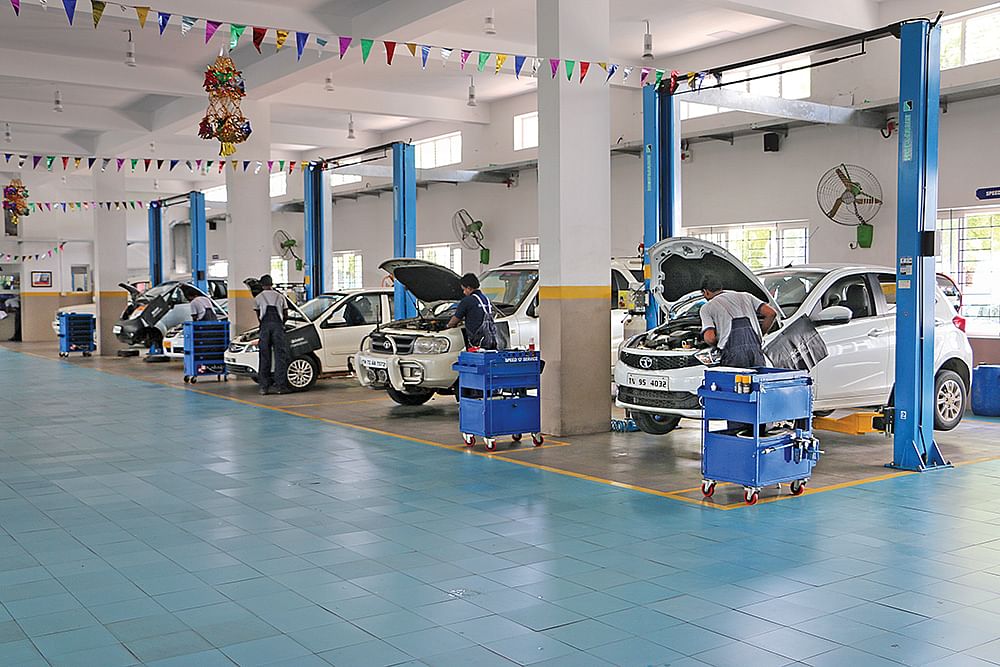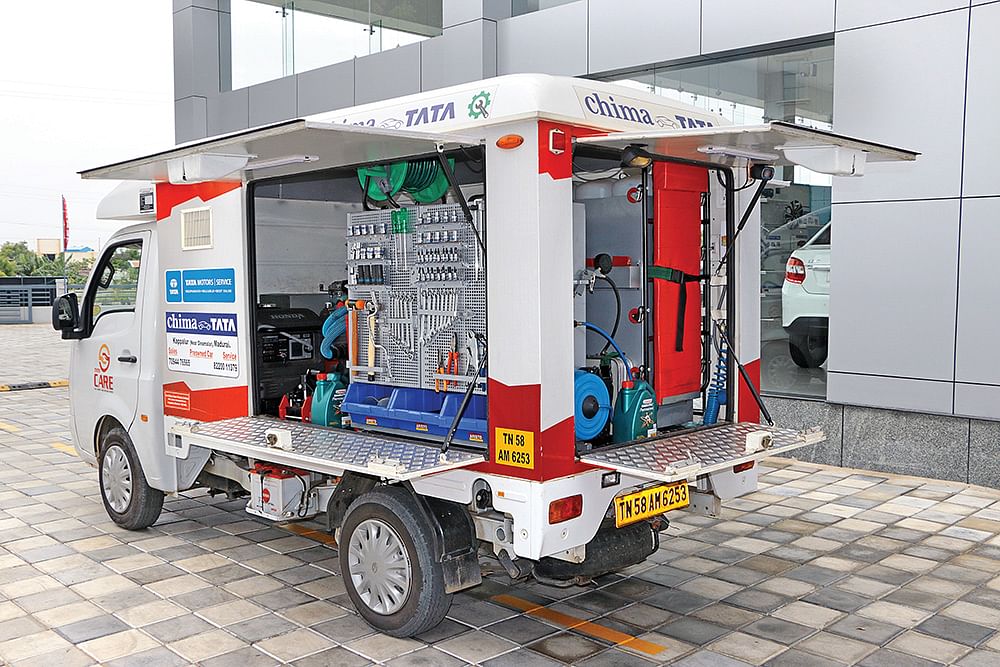Tata Motors' sharper focus on customer service ethos pays off
Tata Motors’ effort to win buyers and influence people with a new aftersales strategy is already paying off as it becomes India’s No. 4 PV player.
Sam Walton, the founder of the Walmart retail chain, once said: “The goal as a company is to have customer service that is not just the best but legendary.” And that mantra applies to just about every business including the selling of automobiles.
In a day and age of fickle-minded consumers and fast-changing preferences, brand loyalty is a much-treasured quality worth its weight in gold. Therefore, it’s not very surprising to see market leaders positioned where they are with millions of happy, satisfied customers. It’s something which Maruti Suzuki India and Hyundai Motor India, which between them have sold 2,179,708 passenger vehicles in FY2018, have mastered. Their high level of customer connect can also be seen in the fact that these two carmakers service a humungous two million cars every month – or 66,666 vehicles every single day!
Tata Motors, which embarked on its aggressive turnaround strategy in 2013 in an attempt to regain 5 percent market share both in the commercial vehicle and passenger vehicle segments, has posted a sharply improved performance in FY2018. The company has reported PV sales of 210,200 units in FY2018, a year-on-year growth of 21.85 percent and a market share of 6.39 percent. Enough to help it zip past Honda Cars India to become India’s No. 4 PV maker in terms of sales, behind Maruti Suzuki, Hyundai Motor India and Mahindra & Mahindra.

What has helped it gain traction is a gaggle of brand-new products like the Tiago hatchback, Hexa SUV, Tigor compact sedan and the Nexon crossover, all built with Tata Motors' Impact Design philosophy, which has suddenly energised the Tata product portfolio. That’s not all. Importantly, Tata Motors has made marked improvements in what has been considered for long the company’s weakest link – poor aftersales and customer support.
“Things have changed dramatically, especially over the last four years, because we have taken a quantum leap ahead in terms of our product offerings. The Zest, Tiago, Hexa, Tigor and the Nexon are no less than any of their respective peers on any parameter when it comes to vehicle technology and being right there in terms of overall product quality,” says Dinesh Bhasin, vice-president – (Customer Care) – Domestic and International Business,
Tata Motors PVBU.
Kaizen as a growth mantra
Bhasin, who has been in the customer service business for over three decades, has been with Tata Motors for the past seven years. He had earlier worked with Hyundai Motor India, Maruti Suzuki India and Toyota Kirloskar and strives to bring in some of the best practices imbibed from Korean and Japanese operating procedures into the aftersales functioning of Tata Motors. This is to derive the benefits of kaizen, Japanese for continuous improvement.
“Today, 86-90 percent of our customer complaints go acknowledged between 24-48 hours, if not entirely redressed during that same timeframe. This is something which I saw being extremely important in the customer handling approach of our Japanese and Korean competitors. Speedy action was missing from Tata Motors’ response earlier,” admits Bhasin.

Tata Motors has 630 touch-points across India including standalone dealer workshops, 3S facilities, as well as Tata Authorised Service Centres. The plan is to double the number of service outlets by 2020.
Tata Motors today has a total network of 630 touch-points across the country, including standalone dealer workshops, 3S facilities, as well as Tata Authorised Service Centres (TASC). “We are evenly placed across metro cities, Tier 2 and Tier 3 towns, and with an aim to clinch the No. 3 spot in terms of our sales volumes in the country over the next three years, we also plan to double the number of our service outlets in India by 2020,” reveals Bhasin.
“We are looking at improving the overall experience of our customers, and aim to take it beyond the point when they are there inside our workshop facilities. With our new product range being majorly targeted at the younger buyer, we are coming up with ways to cater to the needs of the millennials, and hence, one of our strong focuses lies towards digitalisation.”
Five years ago, the company had introduced a unique Vehicle Tracking and Bay Scheduling (VTAB) system for customers to keep a track of the repair or maintenance work being performed on their vehicles while being ensconced in the customer lounge at the service centre. “Being an Indian company, we were the first ones to pioneer this system, which was not being implemented anywhere across manufacturers. Tata Motors has not had the privilege of horizontally deploying systems from a collaborative global partner; this was our indigenous innovation and a step towards improving transparency between the customers and the service centres,” points out Bhasin.
Digitalisation as a happiness driver
On similar lines, Tata is now focusing more on enhancing customer experience through its mobile service application, which offers features such as prior service scheduling, estimated cost check and maintenance tracking, all on a customer’s smartphone.
At the back-end, the company, in 2015, had initiated digitalising its workforce by switching its service advisors from paper to handheld tablets running the dealer management system (DMS), for job card initiation and vehicle history tracking.
“Moreover, we have undertaken a body shop digitalisation program, wherein we have tried to remove the loopholes, which usually cause delays in case of accidental repairs. In a regular scenario, it generally takes around three to five days between an accidental vehicle being inspected, its estimate being passed on through a surveyor and the claim being furnished by an insurance company. Inappropriate estimates from surveyors is another big worry for insurance companies, which prolongs the processing time,” says Bhasin.

Technicians are now equipped with modern servicing tools to ensure competent diagnosis and repair.
“With the help of a US-based software company, we have upgraded the CRM DMS, which now picks out all the individual components from the vehicle part list and generates a part-wise estimate of the damaged parts, which is a much more accurate analysis. Since it is directly sent over an e-mail to the insurance company, we have seen claims being approved within a day. Thus, we have been able to improve the work efficiency as well as reduce the repair time for our customers. We have done this in collaboration with the set of seven insurance companies that we have under Tata Motors Insurance Broking Services.”
“Also, by having regular engagement with our customers, we often receive requests for doorstep service facility in metro cities. Working towards what the customer wants, we have started providing exactly that and have deployed two mobile service vans in Delhi-NCR and Tamil Nadu. Our servicemen on these vans are trained to perform the regular preventive maintenance of up to four cars in a day. Customers need not come to the workshops and usually, these vans arrange for a space near a housing society or an open ground in a school, where the work gets done,” adds Bhasin.
A regular Tata Motors service centre in major areas like Kerala, Delhi, Mumbai and Punjab, which are extremely dense in terms of service volumes, has around 10 bays on an average, with a bay efficiency of 2.5 cars per day.
The aftersales operations of the company also combines its Rs 1,000 crore spare parts business, which sees spares being delivered to Tata’s workshops all across the country through its six warehouses, including two being situated next to its plants, one each in Pune and Sanand.
The company has a total of 10 training centres across the country, including three exclusive body and paint training centres. “Our training centre in Pune is purely mechanical, while the one in Sanand also offers body and paint training alongside mechanical aspects of vehicle repair.”
Connecting better with the dealer fraternity
Even as an increasing number of potential buyers go online to choose their vehicle of choice, the brick-and-mortar dealership still holds sway in India. And now Tata Motors is connecting better with the dealer fraternity.
“Around four years ago, we had a really bad time in terms of sales; even our dealers had to cut down on costs to survive. But now, we are getting back up and the outlets are slowly catching up in their aesthetic appeal as well. We have to ensure that our dealers are profitable and while there are already marketing cash incentives for the service staff at a dealership, we have recently started a new scheme to take care of the life insurance of the workshop staff as well, which is again an industry first and is a step towards employee retention at the dealership level.”

“In terms of technology, be it in our products or aftersales as a whole, we are not behind any of our competitors and we only want to be more innovative and devise new solutions, which would only improvise our current systems,” says Bhasin.
In the year 2015, the company scored below the market average in JD Power’s Customer Service Index study rankings, with 849 points. In 2016, it rose above the market average to score 888 points and stand behind Honda Cars, Maruti Suzuki India and Hyundai Motor India. It was in 2017 that its consistent efforts were validated, scoring 893 points and entering the Top 3, putting it on par with Maruti Suzuki and just behind Hyundai Motor India’s 923 points.
This rise in customer satisfaction is a result of improving upon the parameters of service initiation, service quality and service facility. Armed with a solid line-up of contemporary products and a competent stack of future offerings showcased at Auto Expo 2018, what Tata Motors now needs is a sharpened focus and strong determination to consistently keep improving and maintaining its customer service experience, and aid the company’s ambition of growing faster in the PV segment in India. Having already taken No. 4 rank among India’s PV makers, it is now gunning for the No. 3 spot and will be banking on its growing band of happy customers to say, we're happy to Tata.
(This article was originally featured in the 15 April 2018 issue of Autocar Professional)
Also read: Tata Motors records Rs 294,243 crore revenue, up 9% in FY2018, 18% in Q4
RELATED ARTICLES
Hyundai: Going Beyond Business
Hyundai Motor India sets an example for manufacturing companies across the country with its extensive and impactful soci...
Pawan Goenka: From Rural Madhya Pradesh To India's Space Corridors
The story of Pawan Goenka's life mirrors that of India's ascent—humble beginnings, bold bets, and a mission to make Indi...
M&M and SML Isuzu: Strategy, Synergy, and Game Plan
Mahindra & Mahindra has acquired SML Isuzu, a key player in the small and medium sized CV market in India. But can this ...





 13 May 2018
13 May 2018
 41032 Views
41032 Views





 Kiran Murali
Kiran Murali



 Shahkar Abidi
Shahkar Abidi

